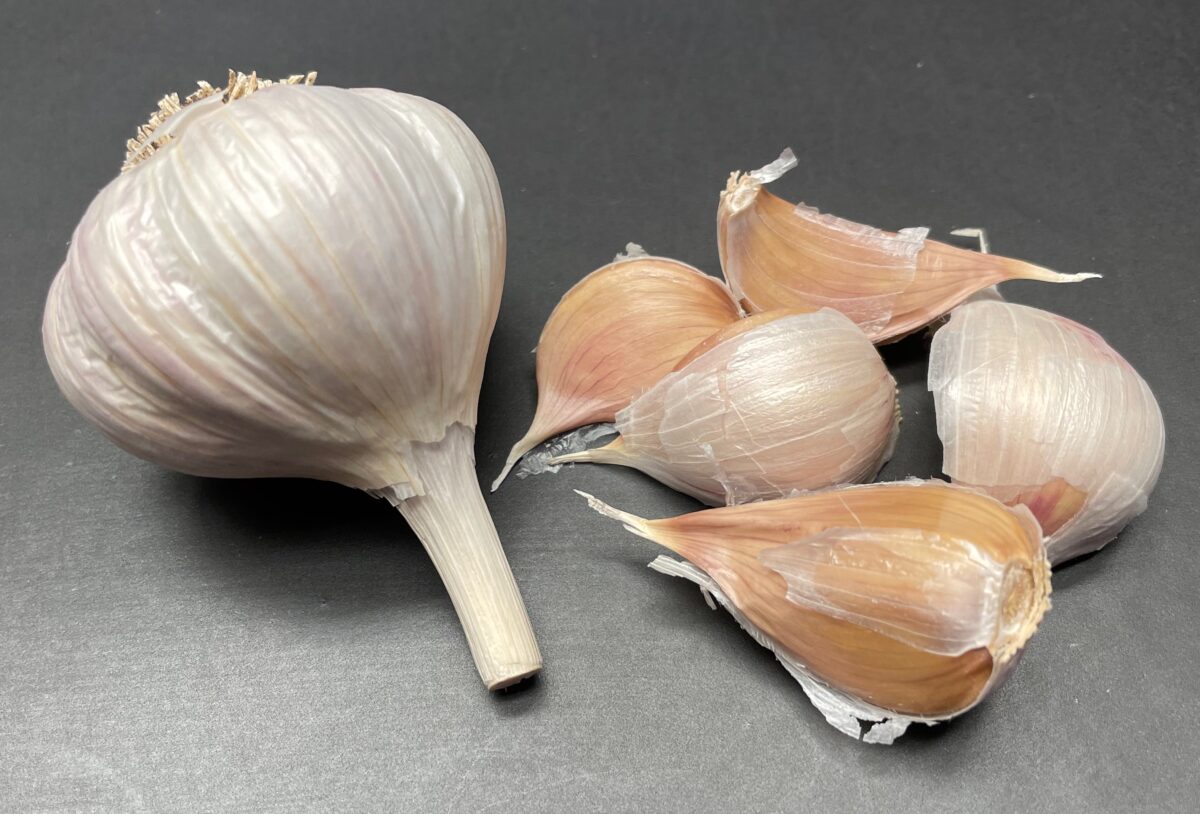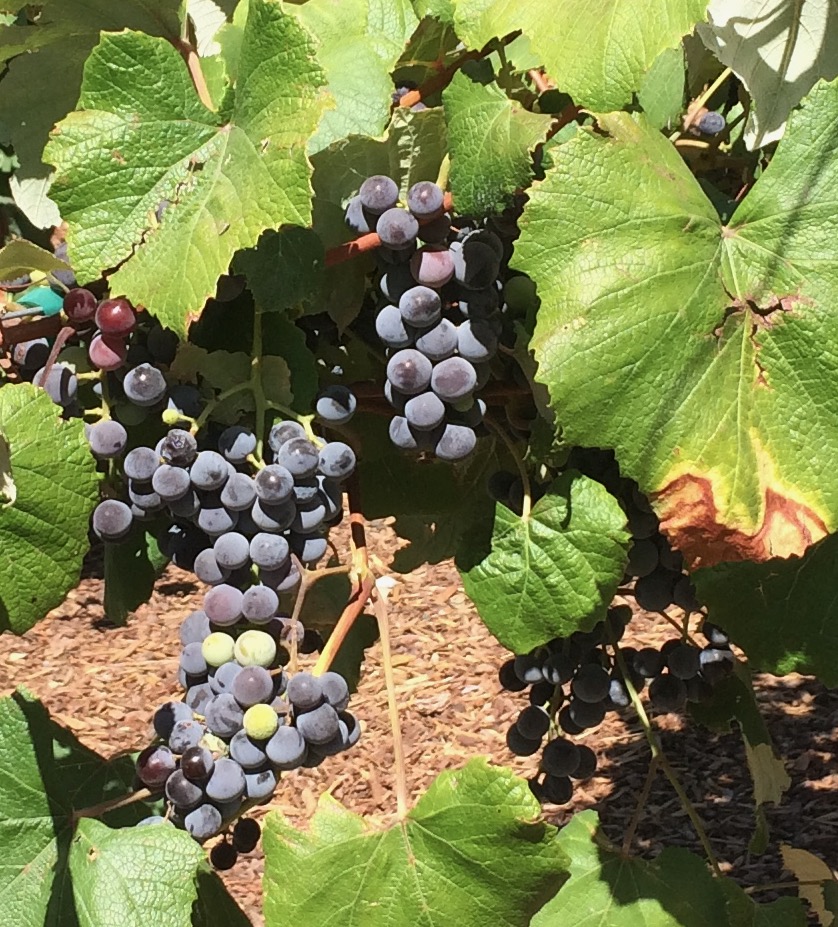Garden Help Desk: Is it too late to plant garlic?
- Garlic bulbs should be carefully separated into individual cloves. The thick peel on the cloves should not be removed.
- Garlic is usually up and growing in the late winter or early spring before cool-season crops can be planted.
- Grapes will develop their full color before they are sweet with full flavor. They need to stay on the vine until they taste sweet.
- Mature, full-flavored grapes like these Concord grapes develop a heavy bloom when they are sweet and ready to pick.

Courtesy Meredith Seaver
Garlic bulbs should be carefully separated into individual cloves. The thick peel on the cloves should not be removed.
I ordered garlic for my garden this summer and it just barely arrived. Is it too late to plant it? Should I wait and plant it in the spring?
Garlic is a fun, easy and rewarding crop to grow and this is a great time to get your garlic planted! Garlic does best when planted in the fall. You won’t see much happening, but the garlic will be busy developing the root system it needs to grow vigorously next spring. Garlic that is planted in the spring doesn’t do well and you’ll end up with very low yields. Gardeners in Utah County can plant their garlic any time from late September through early November.
Do some soil preparation before you plant your garlic. Garlic isn’t picky about soil types as long as the planting site is well drained with good organic matter levels. If organic matter in your garden soil is low, apply up to 1 inch (but not more) of aged compost and work it into the top several inches of soil. If a soil test shows you need to add fertilizer, work the fertilizer into the upper several inches of the soil.
I’m glad to hear you ordered your garlic from a garden seed company. You should have received large, disease-free garlic heads (also called bulbs). Some gardeners are tempted to use garlic they’ve purchased from the grocery store, but this garlic may have been treated to prevent sprouting, may have been in storage for a long time, or may carry plant diseases and pests that are harmless to you but would be a problem for your garden soil or plants. Most grocery store garlic is soft-neck garlic, with a few larger cloves and several small to very small cloves toward the inside of the bulb. I prefer to grow hard-neck garlic. It has a shorter storage life than soft-neck garlic, and there are fewer cloves, but all the cloves are larger and similar in size.
When you’re ready to plant your garlic, carefully separate the bulbs into individual cloves. Do not peel the cloves. Plant your cloves about 2-3 inches deep, pointed end up and wider end down. The cloves should be about 3 to 4 inches apart in your rows and your rows should be about 6 to 10 inches apart. Crowding your garlic more closely than that can reduce the size of next year’s bulbs and the overall yield from your garlic plants. Covering your planting with an organic mulch like straw or compost can help to protect your garlic during the winter.

Courtesy Meredith Seaver
Garlic is usually up and growing in the late winter or early spring before cool-season crops can be planted.
It’s not unusual for garlic or shallots to sprout if the weather is mild after planting. This is nothing to worry about. You don’t need to cover the plants with more soil. There may be some frost damage on the leaves over the winter, but your plants will do just fine and put up new green leaves next year.
When do I harvest Concord grapes? The weather has been mild lately, so I’m not sure how long I can wait.
Concord grapes are an autumn crop, ripening later than many other varieties. Unlike mature peaches and cantaloupe, the flavor of grapes won’t improve after picking, so you’ll want them to be as sweet and flavorful as possible before you harvest. Leave your Concord grapes on the vine for as long as our weather permits while you watch for signs of ripeness. Here are some things that signal ripeness:
Sweet flavor: Sampling your grapes is the most reliable way to know if they are sweet enough. Start sampling your grapes every few days until they’re ready.
Increased bloom (whitish blush) on the grapes: Your grapes will develop their full color well before they reach full flavor and sweetness, so you can’t rely on color to judge ripeness. Increased bloom on your grapes is a good sign that it’s time to start sampling your grapes.

Courtesy Michael Caron
Grapes will develop their full color before they are sweet with full flavor. They need to stay on the vine until they taste sweet.
Dark colored seeds: The seeds in fully ripe grapes will be dark brown, not green. Check the color of the seeds when you sample your grapes.
Softness: Concord grapes will soften a bit when they are ripe.

Mature, full-flavored grapes like these Concord grapes develop a heavy bloom when they are sweet and ready to pick.






